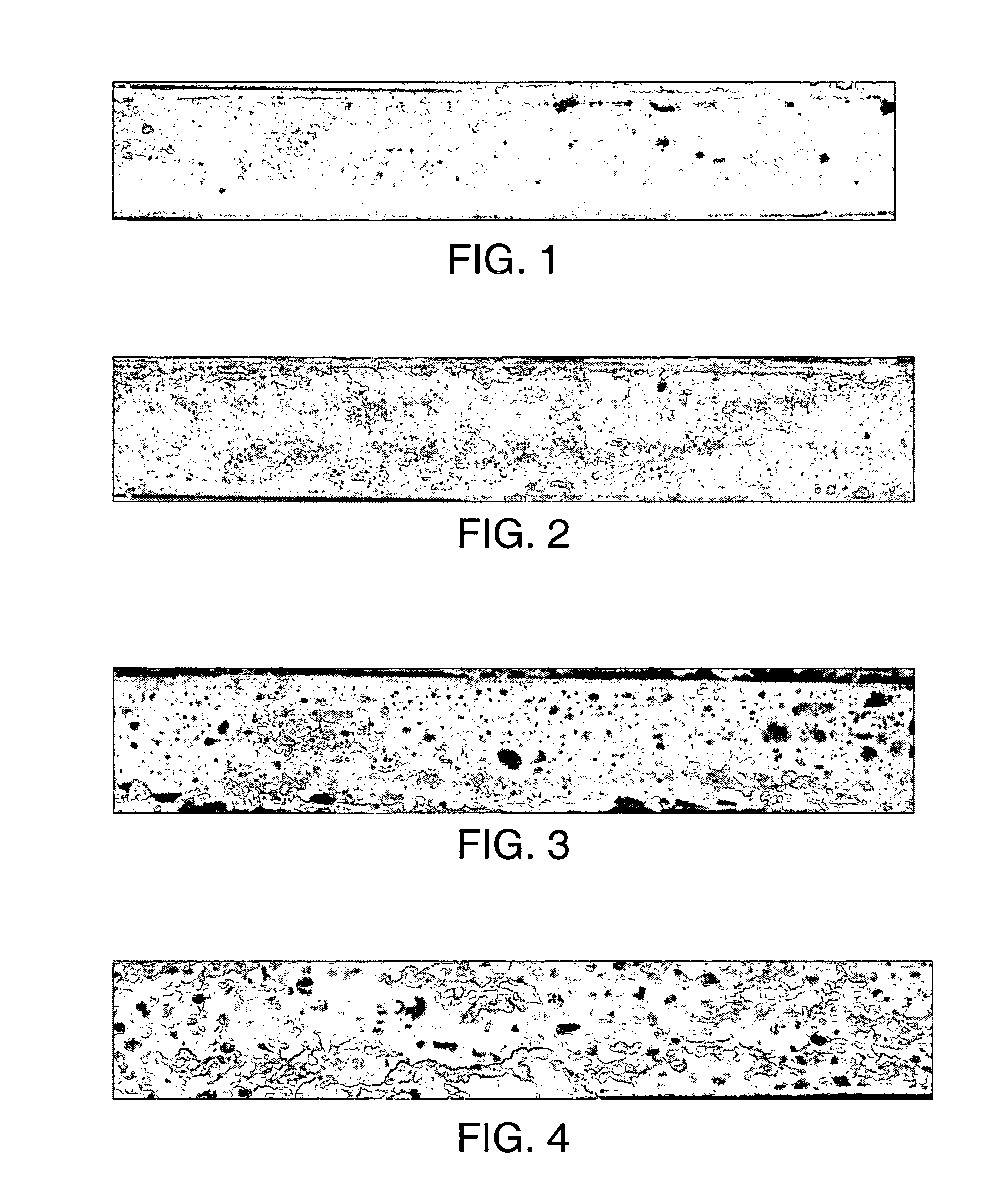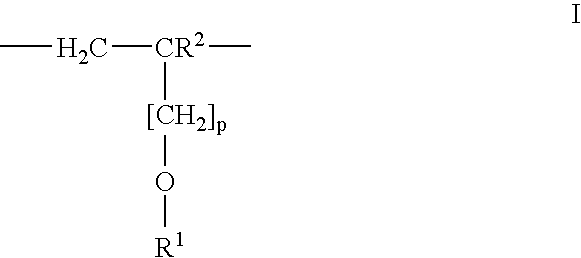Effective use of dispersants in wallboard containing foam
a technology of foam and dispersant, which is applied in the field of controlling the properties of the core when making wallboard, can solve the problems of gross inefficiency in the manufacturing process, aesthetic problems, and product development problems, and achieve the effect of increasing the set time and not decreasing the fluidity of the slurry
- Summary
- Abstract
- Description
- Claims
- Application Information
AI Technical Summary
Benefits of technology
Problems solved by technology
Method used
Image
Examples
example 1
[0077]A liquid polycarboxylate dispersant was divided between the foam water and gauging water. A total of fourteen grams of the liquid dispersant was added as shown in Table 1. The dispersant was 40% solids and 60% water. A dry CSA accelerator was added to the stucco at the rate of 0.20% based on the dry stucco. Foam was made from 1% PFM Soap added to water and the amount of liquid dispersant shown in Table 1. Taking into account the water present in the dispersant, a total of 148 grams of water was used to make the foam.
[0078]The liquid dispersant was added to the gauging water according to Table 1 to make a total of 852 grams of water. To the liquid, the stucco was added and blended to make a homogenous slurry. Foam was added to the slurry. Tests were conducted on the resulting slurry, the results of which are shown in Table I.
[0079]
TABLE 1Dispersant Split100 / 085 / 1574 / 2665 / 35PCE in Mixer14.011.910.39.1PCE in Foam02.13.64.9Slump, In.6.7587.257.25Stiffening4.253.53.52.45Vicat Set*9...
example 2
[0081]In a commercial trial, two different dispersants were added to the mixer and / or the foam water. The plant was running 1795 pounds (7989 kg) of stucco per MSF of board. Wet gypsum accelerator and HRA were added in the amounts shown in Table II to maintain 50% set at the cutting knife. Table II also shows the types and amounts of dispersants added, as well as the slump and observations as to bubble distribution. The amount of dispersant reported in Table II are based on the dry weight of the stucco. Set accelerator is reported in lbs / MSF (g / m2).
[0082]
TABLE IISampleLMNOPQ211 in0.1250.150.150.200.00.0MixerNS in0.00.00.00.00.140.12MixerNS in0.00.00.0230.0350.00.0FoamWGA42 (185)42 (185)42 (185)42.4 (186)38 (167)37.8 (166)HRA4 (17.6)6 (26.4)6 (26.4)10 (44)04 (17.6)Total1051 lb1012 lb1012 lb900 lb1181 lb1173 lbWater(478 kg)(460 kg)(460 kg)(409 kg)(537 kg)(587 kg)Slump7″6.5″6.5″6.75″7.375″8.25″(17.8 cm)(16.5 cm)(16.5 cm)(17.1 cm)(18.7 cm)(21.0 cm)BubblesSmall,Small,SizeSizeSizeSizeUnif...
example 3
[0084]The effect of splitting a dispersant between the mixer and the foam water was further studied in a plant trial. A liquid polycarboxylate dispersant, MELFLUX 2500L (“2500L”), was added to the mixer or the foam water as specified in Table III. The dispersant amount is reported on a solids basis, while the water included with the liquid dispersant was taken into account in calculating the total water present in the slurry. Stucco was utilized at a rate of 1235 pounds / MSF. The amount and placement of the dispersant is shown in Table III, together with the total amount of water added, accelerants used, and the product slump.
[0085]
TABLE IIISample IDXY2500 L in Mixer0.153%0.12%2500 L in Foam Water0.00.04%HRA usage35 lb (16 kg)33 lb (15 kg)Total Water862 lb (392 kg)826 lb (375 kg)Slump7″ (17.8 cm)7.25″ (18.4 cm)
[0086]Comparison of these trial runs confirms the increase in fluidity when the same dispersant is split between the mixer and the foam water, even when the total amount of dis...
PUM
| Property | Measurement | Unit |
|---|---|---|
| molecular weight | aaaaa | aaaaa |
| molecular weight | aaaaa | aaaaa |
| molecular weights | aaaaa | aaaaa |
Abstract
Description
Claims
Application Information
 Login to View More
Login to View More - R&D
- Intellectual Property
- Life Sciences
- Materials
- Tech Scout
- Unparalleled Data Quality
- Higher Quality Content
- 60% Fewer Hallucinations
Browse by: Latest US Patents, China's latest patents, Technical Efficacy Thesaurus, Application Domain, Technology Topic, Popular Technical Reports.
© 2025 PatSnap. All rights reserved.Legal|Privacy policy|Modern Slavery Act Transparency Statement|Sitemap|About US| Contact US: help@patsnap.com



